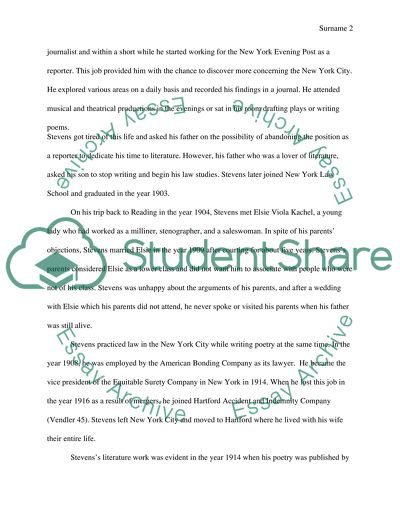Cite this document
(n.d.)
Retrieved from https://studentshare.org/literature/1461877-wallace-stevens-biography
Retrieved from https://studentshare.org/literature/1461877-wallace-stevens-biography
()
https://studentshare.org/literature/1461877-wallace-stevens-biography.
https://studentshare.org/literature/1461877-wallace-stevens-biography.
n.d. https://studentshare.org/literature/1461877-wallace-stevens-biography.


